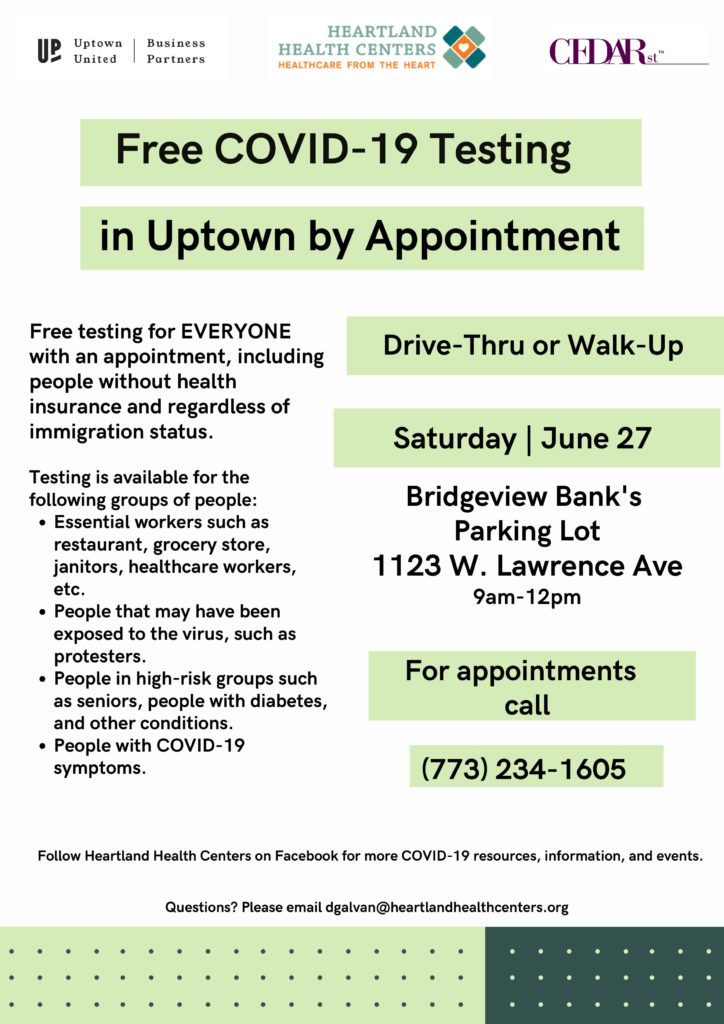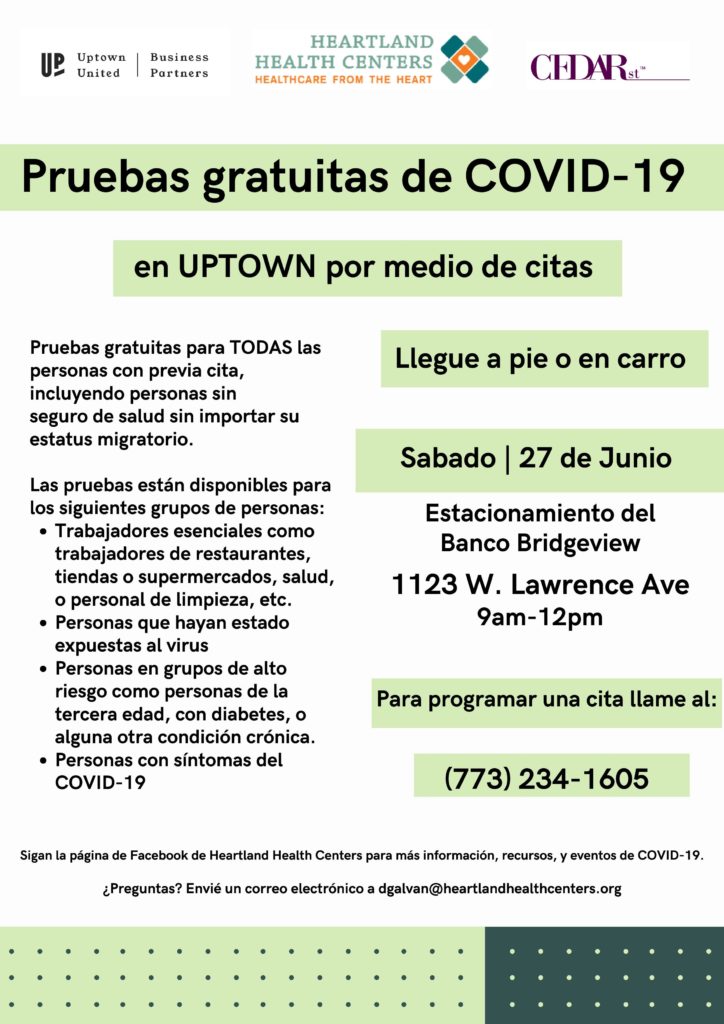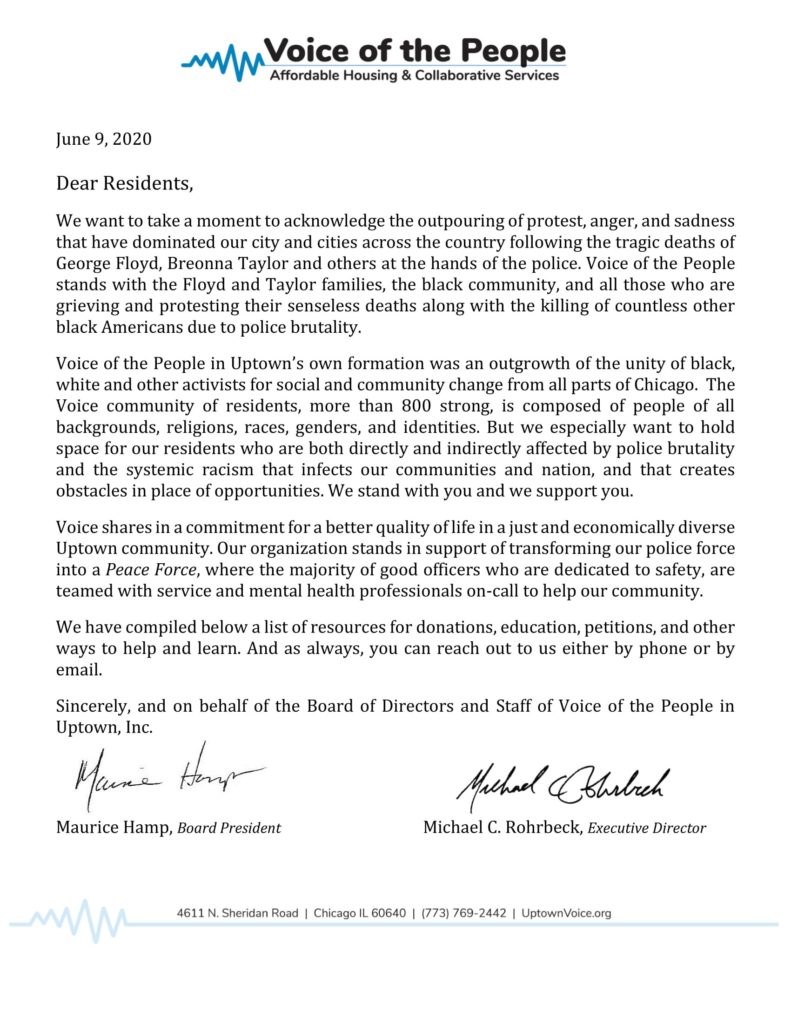Back to School Season…
The Back to School season can be both an exciting and stressful time for parenting adults and students alike. While this year is sure to be no different in this regards, it certainly brings a new set of challenges and concerns as CPS kicks-off remotely. This time around schools are more prepared and have a set plan. While the expectations of school staff have increased, so have the expectations for students and their families.
Hopefully, you have also had the chance to prepare and set up a plan of your own. However, as the school year starts you may find that the reality of virtual learning is different than anticipated and your plan may change and evolve to best fit your family’s needs.
Here are some tips and resources we’ve put together to help you set your student up for success.
Set (and keep) a schedule
This may seem like a given, especially with the set schedules that CPS has implemented. However, you may find it more challenging as time goes on to keep said schedule. As mentioned, the schedule you first set, probably will need some modifications as you and your student(s) adjust. You should allow some flexibility in order to accommodate needed changes, but once you’ve got something that works, stick to it.
Insure that the schedule is clearly communicated by writing it down in a central location as to hold everyone accountable. Utilizing a timer to avoid losing track of time can help keep everyone on track. Be sure to incorporate breaks that include movement, whether it be a change of scenery, some light stretching, yoga, meditation, coloring or other craft projects. The sky is the limit! The important part is that it breaks up the day and is meaningful to the child. This will allow for better concentration throughout the day, encouragement to keep on schedule, and flex time if an activity or task takes longer than anticipated.
Create a daily plan.
This differs from a set schedule as it involves identifying to-do items for that day. It results in a specific plan for that specific day. Some people find utilizing a paper or digital planner/calendar to be helpful. While others prefer different list making strategies.
Make sure students have the right materials.
Whether its pencil and paper, a stable WiFi connection, log-in information for all accounts, a PDF reader, or note-taking apps or reading strategies– whatever they need to get the work done.
If your student is in need of a laptop or other device for remote learning, please contact your school principal as soon as possible. The District is making devices available to every student. Additionally, you can find out if your household is eligible for free high speed internet access through the Chicago Connected program by clicking here or reaching out to your school principal.
Make sure all work is completed.
The idea behind tips 1 – 3 is to help best prepare students for success by keeping them on track with what’s expected of them. However, sometimes things slip through the cracks or remains incomplete for other reasons. Hold students accountable by making sure there is a good reason something may be incomplete. And help them setup a plan that is time-bound and includes action steps to ensure it gets completed (e.g., email the teacher asking for clarifications on step 3 of the activity so that you can turn it in tomorrow by noon).
Remember virtual learning is new, expect there to be a learning curve.
Provide an environment conducive to learning.
This varies based on the student’s needs and household limitations. For example, smaller apartments with everyone at home can present a real challenge to keeping on task. If possible, be sure to setup individual work stations for each child, even if it’s within the same room having a dedicate place will help keep everyone in their routine.
If there is a lot of outside noise or if it is too quiet, utilizing background noise may be helpful. This could be playing music or ambient noise tracks. However, if this is too distracting and outside noise cannot be quieted, try investing in some noise canceling headphones or ear plugs.
If other outside distractions are disrupting school work, get creative. For example, if social media sites are the culprit, try out an app that temporarily blocks these sites. These help prevent mindless scrolling or check-ins to help stay focused and be more productive. Who knows, maybe you’ll find that you could benefit from one as well.
Learn to identify barriers.
This is something teachers have to learn early on in their careers–how to pinpoint exactly what’s happening or going wrong (not unlike a mechanic or doctor). Diagnostic teaching is one approach that can help here, the big idea is to identify precisely why your student might be struggling: Is it focus? Motivation? Too much or too little structure?
Help them check messages and communicate with school.
Check for messages daily from schools, teachers, and other students. Make sure to reply to any messages that require one. And, do not hesitate to reach out to school staff, they are there to help. Hence, our next tip…
Use school and district resources.
Check out the school’s website and Chicago Public School’s website as well. They have a plethora of resources for students and adults, such as CPS’s Remote Learning Guide. Additionally, if you are unfamiliar with it, the Office of Family and Community Engagement in Education has a Parent University that includes workshops for parents to navigate virtual learning.
GENERAL SUPPORT
CPS Command Center
Monday – Friday
8:00 am – 5:00pm
773-553-KIDS (5437)
familyservices@cps.edu
TECHNICAL SUPPORT
CPS Parent Tech Support Hotline
Monday – Friday
7:30am – 4:30pm
773-417-1060
Website
On a side note, if you are interested in providing support to your student’s school, we encourage you to reach out the “Friends of” organization or attend a Local School Council meeting to learn of ways you can get more involved.
Don’t teach – help them understand.
While you are not expected to be the teacher, it is your role to help your student understand the content that is being taught. This is now especially more important than ever.
Along with identifying barriers as discussed in Tip 6. If your student is struggling with understanding a topic or problem, exactly what do they not understand? When students say, ‘I don’t get it,’ the first step is to identify exactly what ‘it’ is–and this isn’t always easy. Most students don’t know what they don’t know. That’s why you (and an internet full of resources) are there to help. Once you get to the bottom of what ‘it’ is, if you are unsure of how to help be sure to reach out to the teacher that way they can assist as well.
Keep in mind that its’s about the child, not the work.
This can be difficult to keep in mind when there is so much pressure (on everyone) to complete the work. And further, this is obviously a parenting philosophy, which may not relate to your family.
But if you believe that assignments should serve the child rather than the child serve the assignments–or that this is at least partly true–then don’t over-emphasize ‘getting everything done’ over the well-being (not to mention creative genius and curiosity and intrinsic motivation) of your child.
Everyone has a different set of learning strategies and styles, strengths and needs. You may find some of these tips more useful, while others not so much. And, that’s okay. The point is to do what’s best for you and your family knowing that it might take a bit of trial and error. After all, to some extent, we are all learning as we go.
Do you have some of your own tips to add or resources to share? Please do so in the comments below. We would love to learn what’s working for our families. Additionally, if you need additional support feel free to reach out to Voice’s Resident Services staff at 773-769-2442.
ANNOUNCING SPECIAL EVENT

A FUNDRAISER, CELEBRATION OF HISTORY, AND BLUES EVENT
Voice has been around for more than fifty years and is gearing up for the next fifty, but not without first celebrating our history, honoring our heroes and having fun at a virtual blues music event October 8th 2020 6:00 pm.
Learn more about “Sweet Home Uptown” where Voice tenants and supporters, past and present, will come together around the importance of affordable housing, social justice and economic diversity in Uptown.
RSVP for FREE or donate today at any level
Affordable housing residents and Voice alumni can contribute to our congratulatory or historical videos highlighting the work of our distinguished honorees and Voice of the People throughout the years. If interested, e-mail us at VoiceOfThePeople@UptownVoice.org.
Read more about our Sweet Home Uptown host committee members and sponsors who are supporting this worthy effort and about our Honorees contributions to Uptown. And, enjoy the blues music that inspires us.
FREE COVID-19 Testing
Saturday, June 27th from 9am – 12pm
By Appointment ONLY


Celebrate Juneteenth!

While many people in the United States celebrate Independence Day on July 4, there is another date that’s viewed as Independence Day. That’s the holiday known as Juneteenth. Almost two years after the Emancipation Proclamation was signed, news arrived in Galveston, Texas that all slaves were to be set free. The official date, June 19, 1865, became known as Freedom/Independence Day and later, Juneteenth. Although Juneteenth is not an official federal holiday, it’s celebrated throughout the country with parades, family reunions, rodeos, picnics and rich African American traditions.
Resources for More Information
- Informational Videos:
- “What is Juneteenth?” (Cartoon, Fun Facts About Juneteenth, 2:28)
- “Juneteenth” (PBS Kids, 1:25)
- Websites
- “Holidays: Juneteenth”
- “The Importance of Juneteenth” (Social Studies for Kids)
- Recommendations from Chicago Public Library
- Informational Videos:
- “What is Juneteenth?“ (Inside Edition, 3:01)
- “The Meaning Behind Juneteenth” (Global News, 2:54)
- “Juneteenth Celebrates Freedom from Slavery in US” (Newsy, 2:19)
- “What is Juneteenth?” (Huffington Post, 2:30)
- Websites
- Chicago Public Library’s Black Lives Matter eBook List
A Message of Support and Solidarity


BLM Movement Resources

Educational Resources
Black Lives Matter
Color of Change
(campaigns that end practices that unfairly hold Black people back)
Ways to Help Beyond Social Media
(by @jezzchung)
PETITIONS
Justice for George Floyd
Justice for Ahmaud Aubrey
Justice for Breonna Taylor
Justice for David McAtee
DONATIONS
George Floyd Memorial Fund
Al Maa’uun
(nonprofit with deep roots in North Minneapolis)
Unicorn Riot
(decentralized media organization that has been live-streaming uprisings)
Campaign Zero
(comprehensive platform of research-based policy solutions to end police brutality in America)
Minnesota Freedom Fund
(MN Freedom Fund has received overwhelming support and recommended donating to any of these organizations instead)
National List (US) of Bail Funds … and other resources
Compilation of Donation Sites to Fund Racial Justice
Ways to Support Black-Owned Businesses
By Sarah Davis from Finimpact
Join us Thursday!
Dr. Oyola from Heartland Health Centers
will be joining Voice on Facebook Live
to answer your questions about COVID-19.
Thursday, June 11th at 4 pm
Simultaneous translation in Spanish.
Facebook.com/VOICEOFTHEPEOPLECHICAGO


Family Time

Staying at home while trying to “flatten the curve” has become the norm for many families. Since schools have moved online, families are now forced to reckon with the fact that they will now go from spending just a few hours of their days with each other to spending every waking moment together. Here are a few tips to help keep the family from going stir-crazy and to add structure back everyone’s lives:
1. Structure Your Days
With close quarters and daily routines disrupted, it is important to set up a system where everyone feels like they are the same page. One example would be a time that everyone eats breakfast, lunch, and dinner. Another example could be scheduling activities throughout the week as a family that breaks up the monotony of staying inside all of the time.
3. Give Each Other Space
It can be a harsh transition from 8-9 hours together to being together 24/7. Make sure to give your loved ones enough time on their own and to give them space. If possible create spaces where everyone can congregate (think dining table or the couch) and also create spaces where people can have more independent time (think in their room or a designated corner). If space is limited, set a rotation schedule, so everyone has a chance to have alone time.
3. Give Yourself a Break
Everyone is going to deal with the pandemic in their own way. Give yourself patience and grace as you are adjusting to the changes, and give your loved ones the patience they need too.

If you are interested in reading more about what you can do to make family time easier, here are a few more links that you can access:
Mental Health Check
Managing Stress during COVID-19
Whether you are an essential worker still being called into your line of duty or if you have been staying at home due to layoffs or work from home orders, COVID-19 has been taking a toll on all of us. During this challenging time, many of us are looking for resources to manage our stress and mental health. Here, we will be sharing a few resources that may be helpful for you during this time.

Take the situation day by day.
With everything constantly changing and shifting, it is easy to feel overwhelmed and unsure of what the future may hold. In this situation, it is best to take each experience at a time and each day at a time. This means to live in the moment and focus on what is right in front of you; what do you need to do this second, this minute, this hour, today?
Follow healthy daily routines as much as possible.
When life is swirling around in chaos, it can be difficult to feel in control of your situation. It may be helpful for you to keep a daily schedule to spell out the things you are going to do for the day and when you will do them. Even if you are staying inside for the majority of the day, that does not mean you can put a bit of structure in your day to day life.
Take time for yourself.
Managing stress is just as mental as it is physical. Take some time out of your day to spend it with yourself. Calm.com is providing free resources during COVID-19 has wonderful guided meditations that can help you take some tension off of your shoulders.
Manage how you consume information.
Be selective about how you consume the news. Watching too much television and reading too many articles can be stressful. Set limits on how long you consume the news each day and be careful about where you are getting your news from.
Stay connected with others, virtually!
This is the perfect time to reach out and connect with those we have not heard from in a while. Reaching out over the phone or via video chat is a great way to get social interaction without having to leave your home.

Toolkit: If you have more time and would like to read more on more detailed ways to take care of yourself, feel free to explore these resources we’ve found.
- https://www.nami.org/covid-19-guide
- https://www.calm.com/blog/take-a-deep-breath?fbclid=IwAR088y0DipyaQGgHaoAiVRIRo2UltlIhWGEwxkW-Z3BIe8CUirRU0Uwnfc8
- https://medium.com/@monzalui/how-to-stay-calm-in-face-of-coronavirus-86d28883aa9https://medium.com/@monzalui/how-to-stay-calm-in-face-of-coronavirus-86d28883aa9


